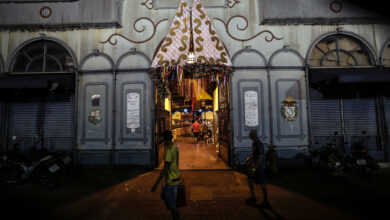The slow empowerment of rural women in the Peruvian Andes

By Paula Bayarte
Andahuaylas, Peru, Jul 14 (EFE).- Gisela Ubaqui is the only woman wearing jeans rather than a traditional Peruvian embroidered skirt while harvesting potatoes in Huayana, a rural community in the southern Peruvian province of Andahuaylas.
The 21-year-old is part of a new generation of women breaking gender stereotypes in the patriarchal Andean society.
“Women tell me that men used to speak for them, their opinion did not count and neither did the decisions they made. But this is changing, little by little women are being empowered and taking on important roles,” she tells Efe.
Gisela is studying environmental engineering in Andahuaylas in the hopes of boosting her family’s agricultural business.
But just a few years ago, this would have been unimaginable for women in the community.
A woman just 10 years older than Gisela says she never studied because her brother had not allowed it.
“Women are gradually gaining access to more education, which until a few years ago was only intended for men,” environmental engineer, Javier Llacsa, tells Efe.
While things are gradually changing, Gisela is still an exception and the lack of education for women in Peru has resulted in very few females in positions of power.
WOMEN’S TRADITIONAL ROLES
Traditionally, a woman’s role in Andean society has been tied to fertility and taking care of the household and finances, while men are in charge of working the fields.
“There is an ancestral complementarity, the man is not complete without the woman and the woman is not complete without the man,” Llacsa explains.
Ana Sierra, a facilitator for farming communities as part of Sipam, a project that protects agrodiversity and agricultural heritage, says women are still one step behind their husbands and that in order to overcome this inequality, they must speak up.
Women have the same knowledge of fields and crops as their husbands, for example, but need to break the shame and reticence associated with speaking out, she urges.
While men of the Andeas wear soccer and sport shirts from around the world, the image of Andean women is stuck in time, with traditional embroidered skirts and hair dues.
GENERATIONAL CHANGE
The image is slowly changing, however, with more and more women like Gisela who have been hugely influenced by social media and the outside world.
“I see women coming out of the traditional scheme every year, and I think: she’s not submissive like her mom,” Gisela says.
Another taboo that is no longer being silenced as much is physical abuse against women, which is usually kept secret among families.
“In this new order, communities are no longer autonomous, they are exposed to external cultural influence, whether from local governments or institutions, that mark gender differences,” says Llacsa.





